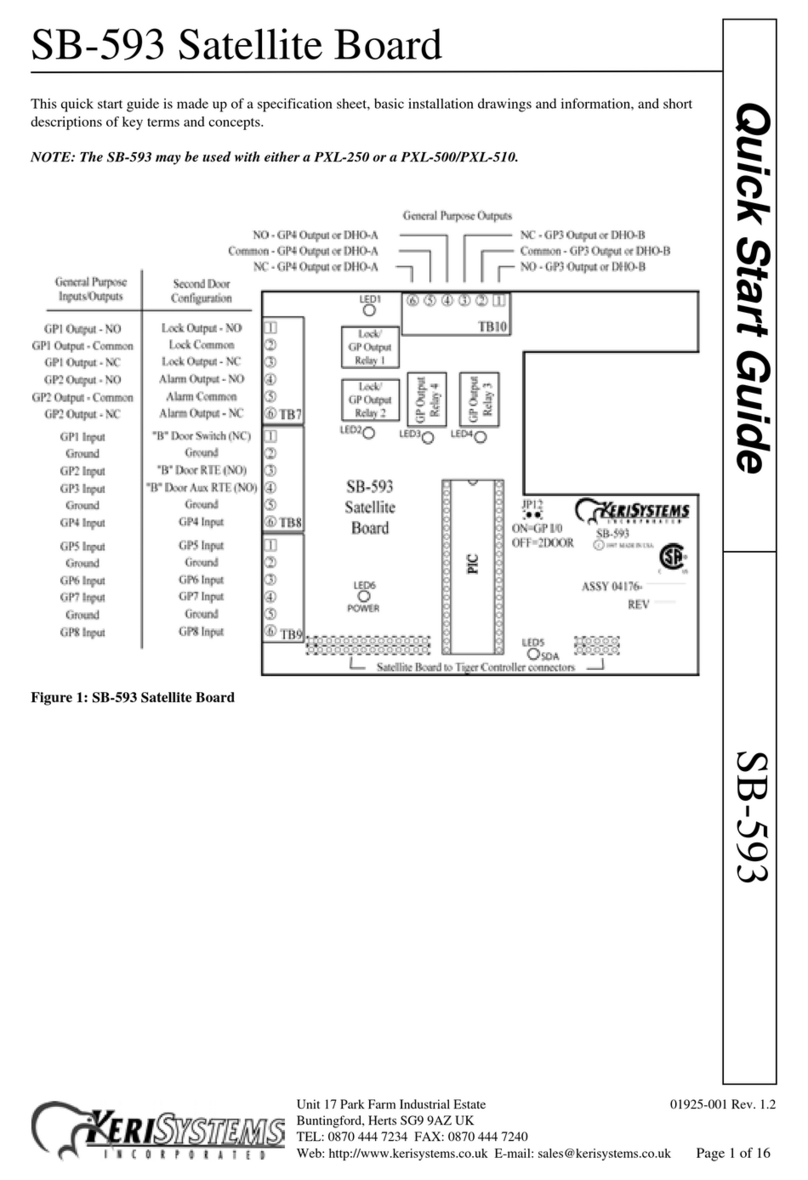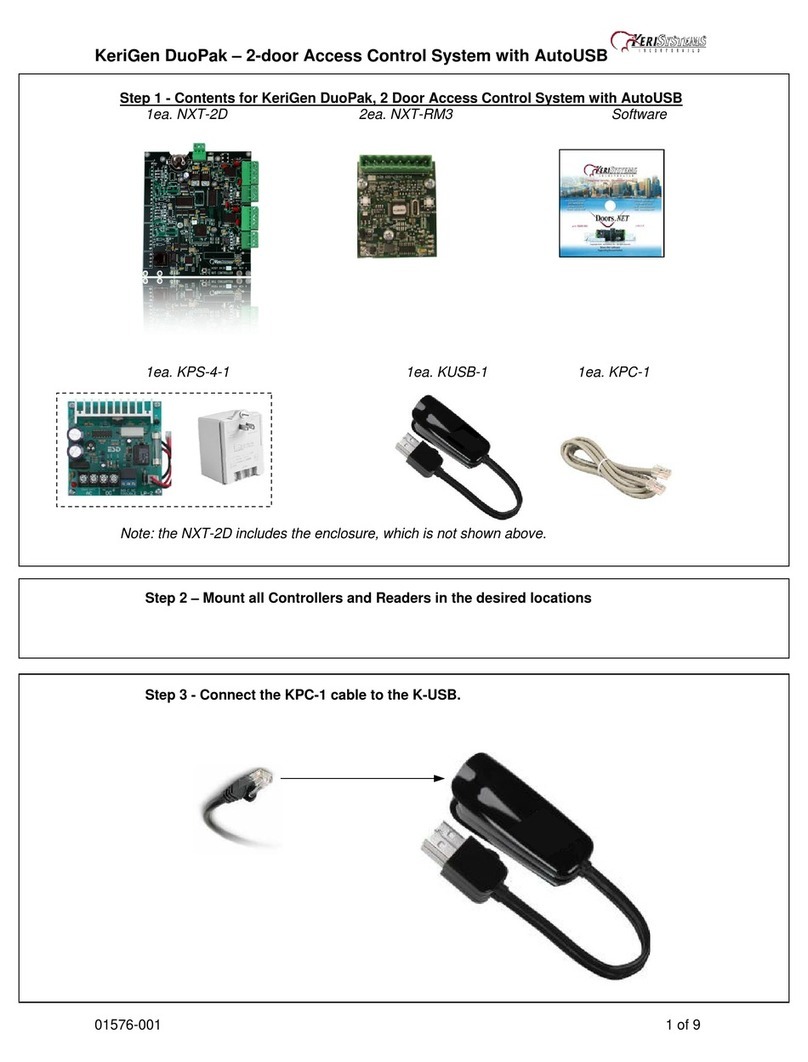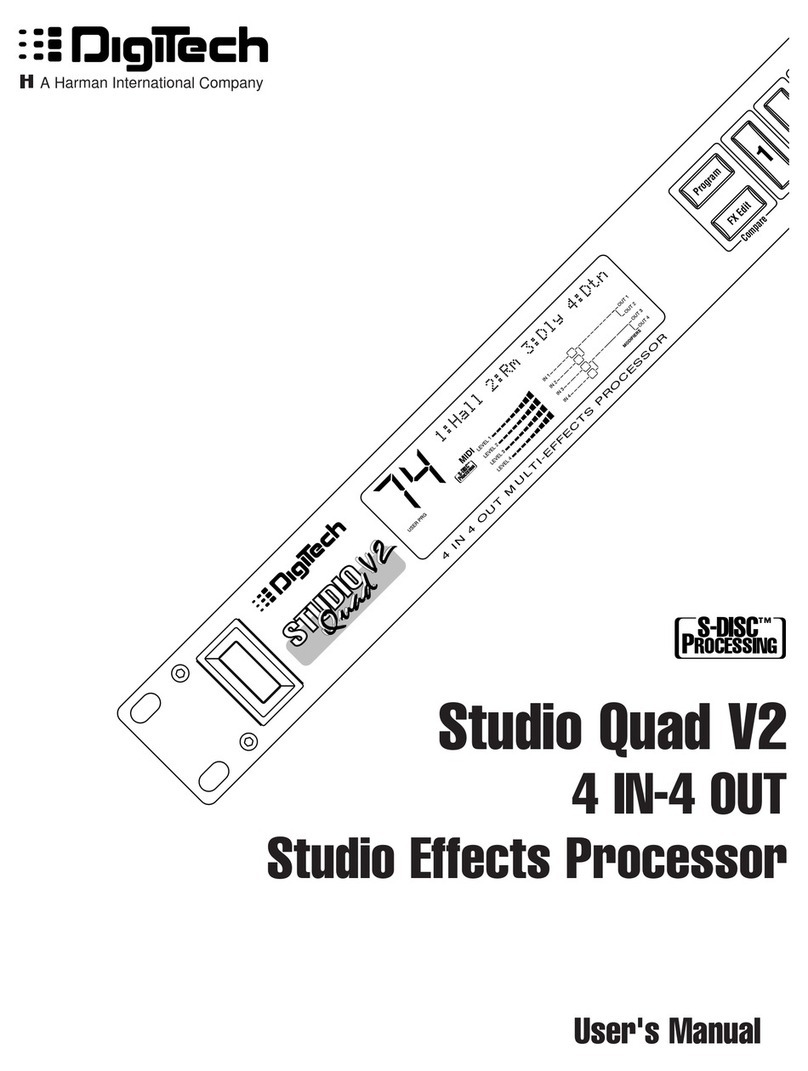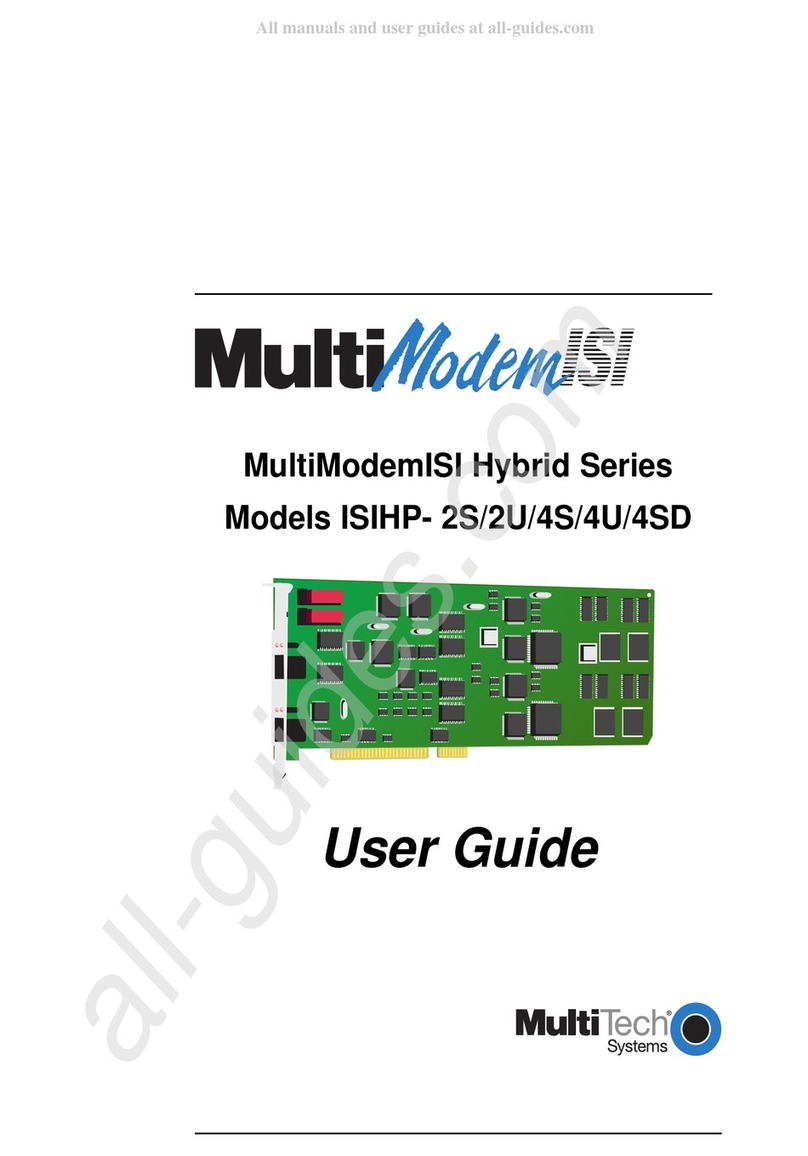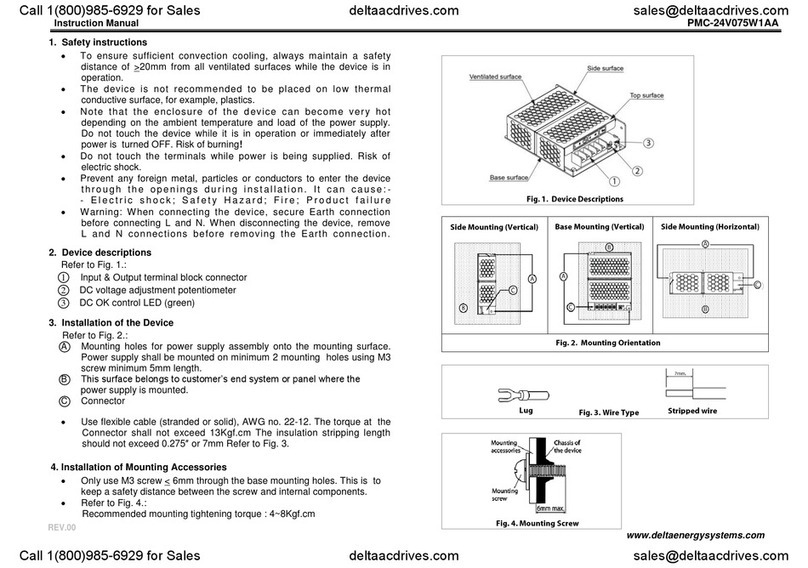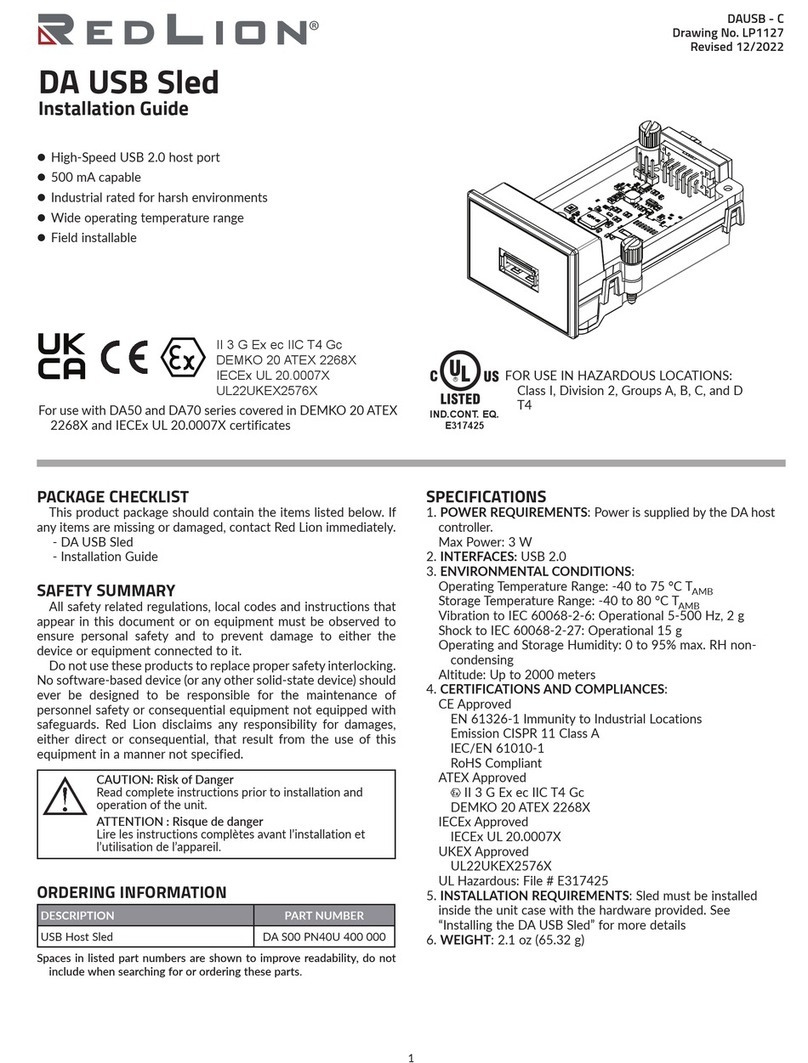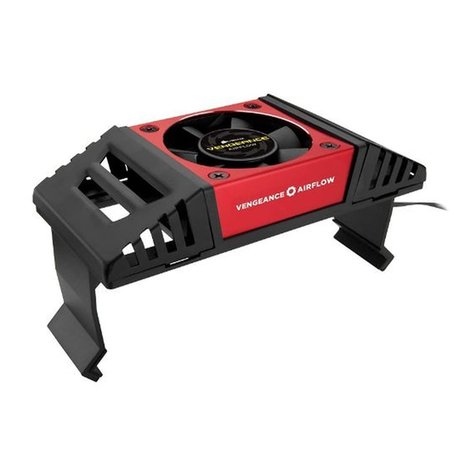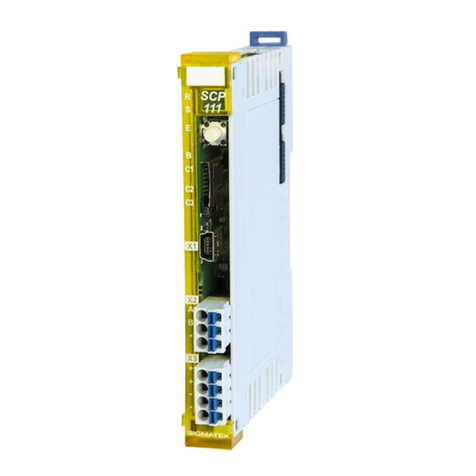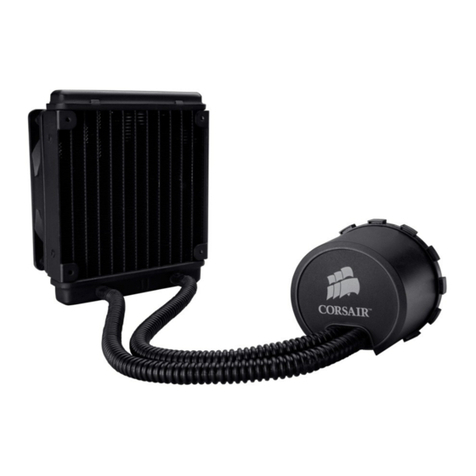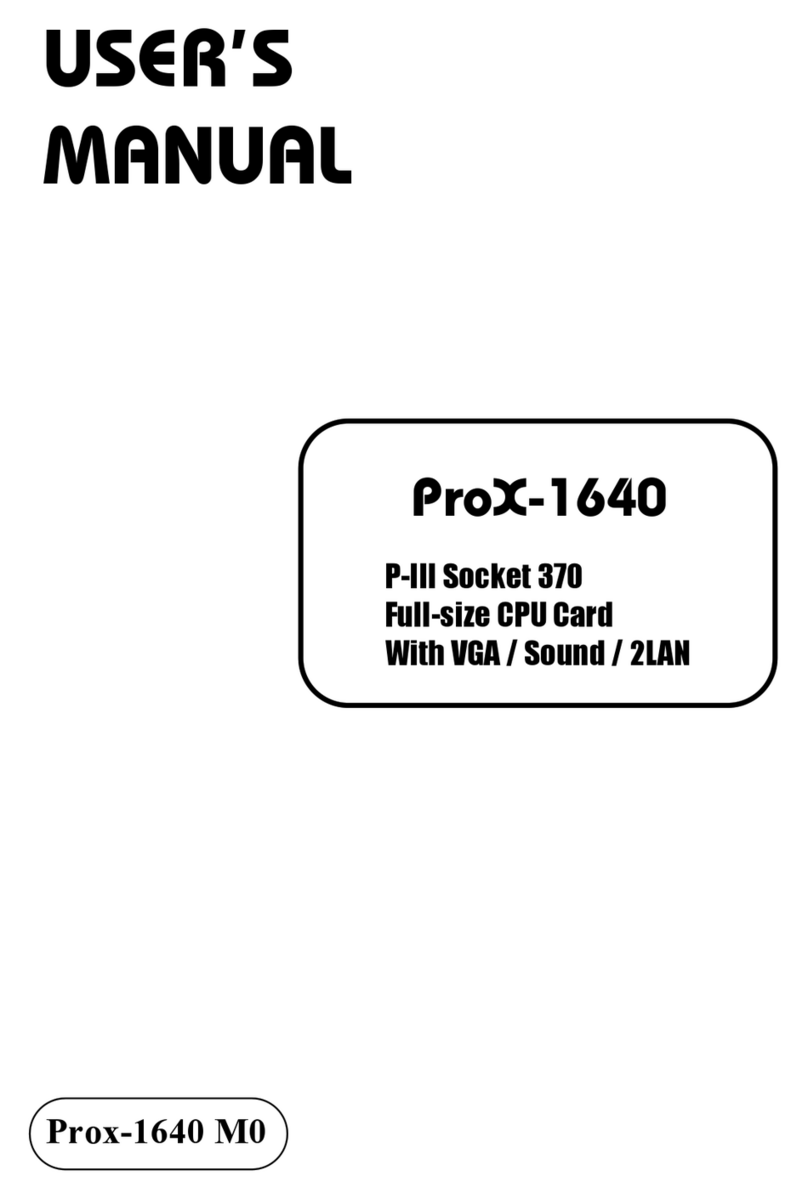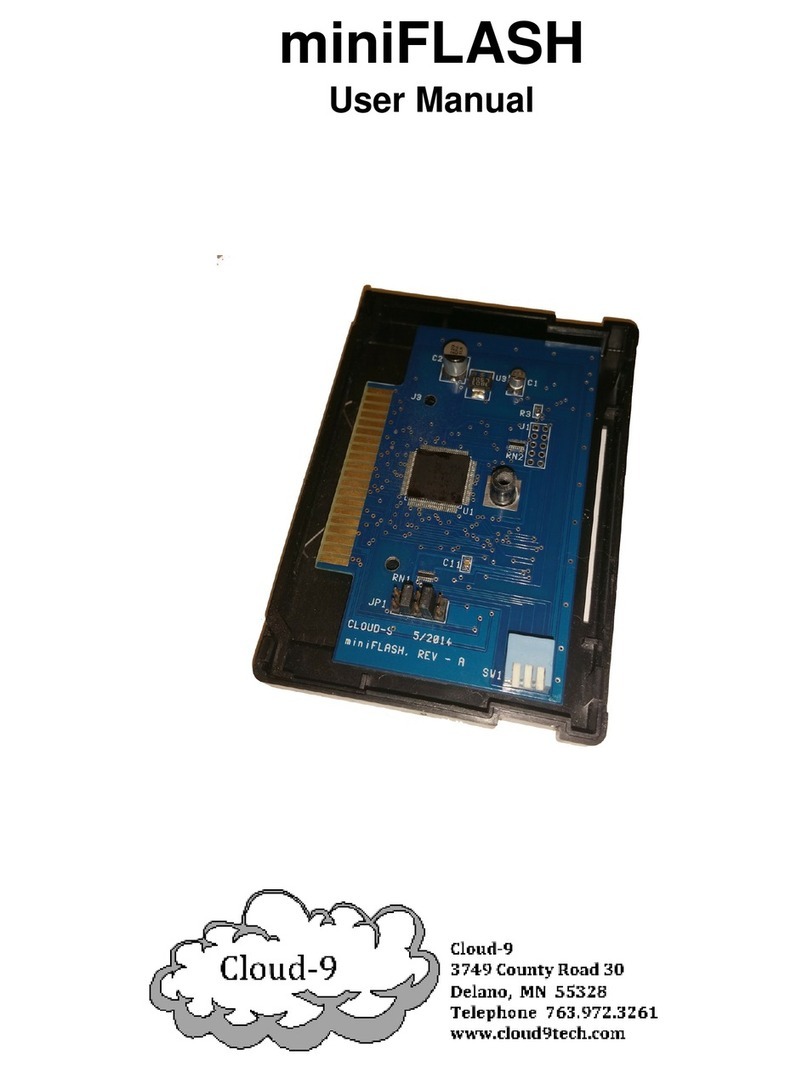KeriSystems SB-293 Use and care manual

$39.00 USD
Keri Systems
Technical
Reference v3.0
SB-293
Satellite Board

Technical Reference Manual – SB-293
01838-002 Rev. 3.0 Printing Date
Page 2of 32 July-1998
© 1997 Keri Systems, Inc. – ALL RIGHTS RESERVED
Document Number 01838-002, Revision 3.0
July, 1998
Keri Systems, PXL-250, SB-293, Tiger Controller, and Doors32 are trademarks of Keri Systems, Inc.
Other product names are trademarks or registered trademarks of their owners.
Keri Systems, Inc. reserves the right to change, without notice, product offerings or specifications.
No part of this publication may be reproduced in any form without written permission from Keri
Systems, Inc.

Technical Reference Manual – SB-293
Printing Date 01838-002 Rev. 3.0
July-1998 Page 3of 32
CONTENTS
Features................................................................................................................................................. 5
Specifications......................................................................................................................................... 8
Cable Requirements .............................................................................................................................. 8
System Cautions.................................................................................................................................... 9
Transient Suppression........................................................................................................................ 9
SB-293 Board Installation .................................................................................................................... 10
Jumper Settings................................................................................................................................ 10
Installing the SB-293 Satellite Board................................................................................................ 10
Understanding Inputs and Outputs................................................................................................... 11
Inputs ............................................................................................................................................ 11
Door Status Switch Input........................................................................................................... 12
Request to Exit Switch .............................................................................................................. 12
General Purpose Inputs ............................................................................................................ 12
Auxiliary RTE Input.................................................................................................................... 13
Output Relays............................................................................................................................... 13
Lock Relay................................................................................................................................. 13
Alarm Out Relay........................................................................................................................ 14
Door Held Open Relay.............................................................................................................. 14
General Purpose Output Relay................................................................................................. 14
Wiring Connections.............................................................................................................................. 15
Terminal Block Connections............................................................................................................. 15
Two-Door Configuration................................................................................................................ 16
TB-7 – Lock Relay Connection ................................................................................................. 16
TB-7 – Alarm Relay Connection................................................................................................ 17
TB-8 – Door Status Switch Connection..................................................................................... 18
TB-8 – Request to Exit Connection........................................................................................... 18
TB-8 – Auxiliary Request to Exit Connection............................................................................ 19
TB-8/TB-9 – General Purpose Input Connection...................................................................... 20
TB-10 – Door Held Open Alarm Relay Connection .................................................................. 21
TB-10 – General Purpose Output Relay Connections.............................................................. 22
Additional Inputs/Outputs Configuration....................................................................................... 24
TB-8/TB-9 – General Purpose Input Connection...................................................................... 24
TB-7/TB-10 – General Purpose Output Relay Connections..................................................... 25
System Operation ................................................................................................................................ 27
I/O Configuration........................................................................................................................... 27
System Maintenance............................................................................................................................ 27
Glossary............................................................................................................................................... 28
Index..................................................................................................................................................... 30
Appendix .............................................................................................................................................. 31

Technical Reference Manual – SB-293
01838-002 Rev. 3.0 Printing Date
Page 4of 32 July-1998
Figures
A Basic PXL-250 Access Control Network with Options........................................................................6
Setting JP12 .........................................................................................................................................10
Satellite Board/Controller Installation ...................................................................................................10
The SB-293 Satellite Board..................................................................................................................15
Installing Wiring and Removing a Terminal Block................................................................................16
Fail-Safe Lock Relay Output Connections............................................................................................16
Fail-Secure Lock Relay Connections ...................................................................................................17
Alarm Relay Output Connections.........................................................................................................17
Door Status Switch Input Connections.................................................................................................18
Request to Exit Input Connections.......................................................................................................19
Auxiliary Request to Exit Input Connections ........................................................................................19
General Purpose Input Connections – Two-Door Configuration..........................................................20
Door Held Open Alarm Relay Output Connections - A-Door ...............................................................21
Door Held Open Alarm Relay Output Connections - B-Door ...............................................................22
Normally Open General Purpose Relay Output Connections – Two-Door Configuration....................23
Normally Closed General Purpose Relay Output Connections – Two-Door Configuration.................23
General Purpose Input Connections – Additional I/O Configuration....................................................25
Normally Open General Purpose Relay Output Connections – General Purpose I/O Configuration ..26
Normally Closed General Purpose Relay Output Connections – General Purpose I/O Configuration 26
Tables
Reader Current Draw..............................................................................................................................8
Lock Relay Output Connections...........................................................................................................16
Alarm Output Relay Connections.........................................................................................................17
Door Status Switch Input Connections.................................................................................................18
Request to Exit Input Connections.......................................................................................................18
Auxiliary Request to Exit Input Connections ........................................................................................19
General Purpose Input Connections – Two-Door Configuration..........................................................20
Door Held Open Alarm Output Relay Connections - A-Door ...............................................................21
Door Held Open Alarm Output Relay Connections - B-Door ...............................................................22
General Purpose Output Relay Connections – Two-Door Configuration.............................................23
General Purpose Input Connections – Additional I/O Configuration....................................................24
General Purpose Output Relay Connections – Additional I/O Configuration.......................................25

Technical Reference Manual – SB-293
Printing Date 01838-002 Rev. 3.0
July-1998 Page 5of 32
Features
The SB-293 Satellite Board expands the capabilities of the PXL-250 Tiger Controller. Depending
upon the application, the SB-293 can add 8 general purpose inputs and 4 general purpose outputs, or
it can add Door Switch and Request to Exit inputs and Door Lock and Alarm outputs for a second
door (one reader per door) with 6 additional general purpose inputs and two additional general
purpose outputs. In a networked access control system, the SB-293 increases the number of doors
that can be managed from 128 to a maximum of 256. Refer to Figure 1 on pages 6 and 7 for a basic
diagram of the PXL-250 access control network, including the SB-293 Satellite Board.
Standard features include:
Second Door Access Control Configuration
•two doors, one reader per door
(in conjunction with a PXL-250 controller)
•two door control inputs
−door switch status
−request to exit
•six general purpose inputs
−one can be user-configured for B-door
Auxiliary RTE
•two Form C output relays
−door lock
−door alarm
•two general purpose, Form C, output
relays
−both can be user-configured for Door
Held Open alarm annunciation
Additional Input/Output Configuration
•one door may use one or two readers
•eight general purpose inputs
•four general purpose, Form C, output
relays
Quick Connect Wiring Connectors
•allows for quick removal of wiring connectors
•makes it easy to change/upgrade wiring following system installation
Electrical Surge/Transient Protection
•Transorbs across all inputs and outputs (except relay outputs)
•MOVs across all relay outputs
SYSTEM INFORMATION

Technical Reference Manual – SB-293
01838-002 Rev. 3.0 Printing Date
Page 6of 32 July-1998
Figure 1 – A Basic PXL-250 Access Control Network with Options
Direct to PC
(50 feet max)
PXL-250
MASTER
Address - 1
PXL-250
SLAVE
Address - 3
Global Unlock or Auxiliary RTE-A Input
Door Alarm
Lock, Door Switch, RTE
"A" Reader
PC
4 Output Relays
SB-293
SATELLITE BOARD
RS-485 Serial Communication Controller Network
PXL-250 Tiger Controller
Door Switch and Request to Exit Inputs
General Purpose Inputs
Door Lock Output Relay (3A, Form C)
Door Alarm Output Relay (3A, Form C)
PXL-250 Tiger Controller
Door Switch and Request to Exit Inputs
General Purpose Inputs
Door Lock Output Relay (3A, Form C)
Door Alarm Output Relay (3A, Form C)
SB-293 Satellite Board
May Have
8 General Purpose Inputs
and 4 Output Relays
8 General Purpose Inputs
Modem
4,000 Feet Total Distance for Controller Network Communication
"B" Reader
Global Unlock or Auxiliary RTE-A Input
Door Alarm
Lock, Door Switch, RTE
"A" Reader
"B" Reader
Modem
PC
RS-232 Serial Communication
Direct or Via Modem
Via Modem
SYSTEM INFORMATION

Technical Reference Manual – SB-293
Printing Date 01838-002 Rev. 3.0
July-1998 Page 7of 32
Figure 1 – A Basic PXL-250 Access Control Network with Options
PXL-250
SLAVE
Address - 2
SB-293
SATELLITE BOARD
SB-293 Satellite Board
May Have
Second Door Control with
Door Switch & Request to Exit Inputs
Door Lock Output Relay (3A, Form C)
Door Alarm Output Relay (3A, Form C)
and
6 General Purpose Inputs
2 Output Relays
2 Output Relays
6
General Purpose
Inputs
Lock, Door Switch, RTE - "B"
Door Alarm - "B"
4,000 Feet Total Distance for Controller Network Communication
PXL-250 Tiger Controller
Door Switch and Request to Exit Inputs
General Purpose Inputs
Door Lock Output Relay (3A, Form C)
Door Alarm Output Relay (3A, Form C)
RS-485 Serial Communication Controller Network
Auxiliary RTE - "A" or General Purpose Input
Door Alarm - "A"
Lock, Door Switch, RTE - "A"
"A" Reader
"B" Reader
1 Input can be User-Configured
for Auxiliary RTE-"B"
Both Output Relays can be User-Configured
for Additional Alarm Annunciation
SYSTEM INFORMATION

Technical Reference Manual – SB-293
01838-002 Rev. 3.0 Printing Date
Page 8of 32 July-1998
Specifications
Unit Dimensions
•PXL-250 controller PCB with an SB-293 Satellite Board
−7.25 inches high by 6.00 inches wide by 1.75 inches deep, including wiring connectors
−(18.45 cm by 15.25 cm by 4.45 cm)
•PXL-250 controller PCB with an SB-293 Satellite Board and an LCD-1 Alpha/Numeric Display
−8.10 inches high by 6.00 inches wide by 1.75 inches deep, including wiring connectors
−(20.60 cm by 15.25 cm by 4.45 cm)
•Enclosure
−9.70 inches high by 8.20 inches wide by 2.60 inches deep
−(24.65 cm by 20.85 cm by 6.60 cm)
Operating Temperature/Humidity Range
•0°F to 140°F (-18°C to 60°C)
•0% to 90% Relative Humidity, non-condensing
Controller Power Requirements
•12 VDC @ 1.5 Amp
Current Draw
•maximum current draw 500 mA for a controller with all options installed
•120 mA max for a PXL-250 Controller
•150 mA max for an SB-293 Satellite Board
•refer to Table 1 for Reader current draw
Reader Type
MS-3000 MS-4000 MS-5000 MS-7000 MS-9000
Current Draw 50 mA 50 mA 100 mA 200 mA 200 mA
Table 1 – Reader Current Draw
Output Relay Contact Rating
•1 Amp @ 24 VDC
Input Device Configuration
•Door Sense normally closed
•Request to Exit normally open
•General Purpose normally open or closed as needed by the application
Cable Requirements
Input and Output Connections
•two conductor, stranded, AWG 22 or a larger gauge
NOTE: The Lock Output relay may require a heavier gauge of wire depending upon the current
demands of the lock and the length of the lock wiring run.
SYSTEM INFORMATION

Technical Reference Manual – SB-293
Printing Date 01838-002 Rev. 3.0
July-1998 Page 9of 32
System Cautions
Transient Suppression
Voltage transients are electrical surges or spikes conducted through power, input, or output lines.
Transients are generated when electric devices (such as electric locking devices) are turned on or off.
Transients may affect the operation of the SB-293 satellite board. Because of this, transient
suppression is required for the SB-293 satellite board. A transient suppressor is a device added to an
electrical circuit that minimizes the affects of transients. Depending upon the application, a transorb or
an isolation relay provides the suppression necessary to ensure proper operation of the access
control system.
Under normal circumstances, a 1.5KE39C transorb must be installed across the positive and negative
power lines at the electric locking device to provide the best operating conditions for the SB-293
satellite board. This transorb will prevent any transients that may be generated by an electric locking
device from affecting the operation of the SB-293 satellite board. Two bipolar transorbs are provided
with each SB-293 satellite board for this purpose.
In applications such as parking gates or turnstiles (or any application using a large electric motor), a
transorb alone may not provide enough suppression; an isolation relay may be required. For ease of
installation, Keri Systems offers an Isolation Relay Package (Keri Systems p/n IRP-1) which can
provide suppression for the large transients generated by these types of devices.
SYSTEM INFORMATION

Technical Reference Manual – SB-293
01838-002 Rev. 3.0 Printing Date
Page 10 of 32 July-1998
SB-293 Board Installation
Jumper Settings
On the SB-293 satellite board, there is only one jumper that may require setting. JP12 configures the
satellite board for either second door control or for general purpose inputs and outputs (see Figure 2,
and Figure 4 on page 15).
JP12 – Configure Satellite Board
–Jumper across JP12 pins 1 and 2 configures the satellite board for general-purpose
inputs and outputs.
–NO Jumper across JP12 configures the satellite board for second door control with
additional inputs and outputs. When the satellite board is configured for second door
control, the primary door must be connected to the "A" reader (TB-5 on the PXL-250
controller board) and the secondary door must be connected to the "B" reader (TB-6 on
the Receiver board attached to the controller board).
Figure 2 – Setting JP12
Installing the SB-293 Satellite Board
Board Installation
Perform the following steps to install an SB-293 satellite board onto a PXL-250 controller.
1. Turn the controller's power off.
2. Line up the upper left-hand corner of the satellite PCB with the controller PCB.
3. Line up the stand-offs in all four corners of the satellite PCB with corresponding mounting
holes in the controller PCB (see Figure 3).
4. Gently press each stand off into its mounting hole.
Figure 3 – Satellite Board/Controller Installation
SYSTEM INSTALLATION
JP12
off = second door control
on = inputs and outputs

Technical Reference Manual – SB-293
Printing Date 01838-002 Rev. 3.0
July-1998 Page 11 of 32
Wiring the Satellite Board
There are several things to keep in mind when wiring the satellite board.
DO •Route cables in accessible areas whenever possible for ease of maintenance.
•Add transient suppression across electric devices attached to satellite board output relays.
•Use an isolation relay (Keri Systems p/n IRP-1) if connecting to a parking gate, turnstile, or
any application using a large electric motor.
•For a single door application, install the door's reader to the TB-5, "A" reader connection on
the controller.
•For a two door application, install the primary door's reader to the TB-5, "A" reader
connection on the controller and install the secondary door's reader to the TB-6, "B" reader
connection on the receiver board.
DO NOT
•Stretch or over-tension cables.
•Route cables over sharp objects.
•Let the cables and the individual wires get tangled.
•Route cables near EMI sources. Cables can act as antennas, receiving EMI that can affect
controller performance.
Understanding Inputs and Outputs
The following section provides descriptions of the Inputs and Outputs on the SB-293 Satellite Board.
Possible wiring diagrams for inputs and outputs are included in the next section, Wiring Connections,
which begins on page 15.
The Satellite board has eight inputs and four outputs available for configuration. If the Satellite Board
is configured for two-door operation, two inputs and two outputs are dedicated to specific functions.
One input is dedicated for the door status switch and one input for the Request to Exit input. One
output is dedicated for the Lock Relay and one output for the Alarm Relay. Through programmable
features in the Doors32™ program, the remaining two outputs can be dedicated to Door Held Open
alarms for the A- and B-doors, and one input can be dedicated to an Auxiliary RTE input for the B-
door. The remaining inputs and outputs may be used for general purposes. If the Satellite board is
configured for general inputs and outputs, all eight inputs and all four outputs are available for
general-purpose use.
Inputs
An input detects a state change generated by a device outside of the controller. The controller then
responds to that state change. The input devices that generate the state change may be normally
closed or normally open.
A normally closed input device continually keeps a circuit active or complete. A state change is
generated when the normally closed input device is forced open, breaking the circuit. In an access
control system, a door switch is a typical example of a normally closed device. While the door
remains closed, the switch remains closed. When someone opens the door, the door switch is
opened, breaking the circuit and generating a state change. The controller then responds to this state
change and generates an output (such as sounding an alarm if the door is a secure door).
A normally open input device continually leaves a circuit open or incomplete. A state change is
generated when the normally open input device is forced closed, completing the circuit. In an access
control system, a request-to-exit (RTE) button is a typical example of a normally open device. In an
access control installation, an RTE button is located on the secured side of the door. While there is no
one there pressing the button, the switch remains open. When someone desires to exit through a
secure door, they press the RTE button, closing the circuit and generating a state change. The
SYSTEM INSTALLATION

Technical Reference Manual – SB-293
01838-002 Rev. 3.0 Printing Date
Page 12 of 32 July-1998
controller then responds to this state change and generates an output (such as unlocking the door to
allow egress).
Door Status Switch Input
The door status switch input accepts a signal from a normally closed input switch that indicates the
status of the door: open or closed. While the door remains closed, the switch remains closed. When
someone opens the door, the door switch is opened, breaking the circuit and generating a state
change. The controller responds to this state change and generates an alarm output if the door is
forced or held open too long. Refer to Figure 9 on page 18 for a typical door status switch wiring
diagram.
NOTE: If the satellite board is configured for second door control and the door status switch is not
being used, install a jumper across pins 1 and 2 of TB-8 to prevent a continuous door open alarm
from being received by the controller.
NOTE: When using a door status input, the door must also have a Request to Exit input for proper
operation/annunciation of Door Forced and Door Held Open alarms.
Request to Exit
The request to exit (RTE) input accepts signals from a normally open input device that indicates that
a request has been made for someone to exit a secured door. Motion detectors, pressure-sensitive
floor mats, or push buttons may make RTE requests. While there is no one there to activate the RTE
request, the input remains open. When someone desires to exit through a secure door, they activate
the RTE device, closing the circuit and generating a state change. The controller then responds to
this state change and generates an output unlocking the door to allow egress. Refer to Figure 10 on
page 19 for a typical RTE wiring diagram.
General Purpose Inputs
The general-purpose input accepts signals from either a normally closed or a normally open input
device that indicates when a change in state has occurred.
For a normally closed input device, while the input device is in its normal state the general-purpose
input circuit remains closed. When the input device is activated, the general-purpose input circuit is
opened generating a state change. The controller may respond to this state change per programmed
instructions. The general-purpose input is configured through the Doors32™ access control software.
A normally closed push-button may be used to provide a normally closed general-purpose input.
While the push button is in its normal state, the normally closed circuit is complete and no input signal
is generated at the controller. When a user presses the push button it opens the general-purpose
input circuit and generates a state change. The controller responds to this state change per
programmed instructions and may perform some action. Refer to either Figure 12 on page 20 or
Figure 16 on page 23 for a typical general-purpose normally closed input wiring diagram.
For a normally open input device, while the input device is in its normal state, the general-purpose
input circuit remains open. When the input device is activated, the general-purpose input circuit is
closed generating a state change. The controller may respond to this state change per programmed
instructions. The general-purpose input is configured through the Doors32™ access control software.
A normally open motion detector may be used to provide a normally open general-purpose input. If
the motion detector does not detect motion, its alarm circuit remains open and no input signal is
generated at the controller. When the motion detector does detect someone entering its controlled
area, its alarm circuit closes, completing the general-purpose input circuit and generating a state
change. The controller responds to this state change per programmed instructions and may perform
some action. Refer to Figure 12 on page 20 or Figure 15 on page 23 for a typical general-purpose
normally open input wiring diagram.
SYSTEM INSTALLATION

Technical Reference Manual – SB-293
Printing Date 01838-002 Rev. 3.0
July-1998 Page 13 of 32
Auxiliary RTE Input
One of the general-purpose inputs can be configured as an auxiliary RTE input for the B-door. The
auxiliary RTE input allows a second RTE switch to be used to unlock the B-door at a controller. Using
a normally open switch as the input device, while the switch is in its normal state, the general-purpose
input circuit remains open. When a person requesting egress closes the switch, the general-purpose
input circuit is closed generating a state change. The controller then responds to this state change
per programmed instructions and generates a command to unlock the door and allow egress. Refer
to Figure 11 on page 19 for a typical auxiliary RTE input wiring diagram.
Output Relays
In many respects, a Form C output relay performs the opposite task of an input. An input detects a
state change generated by a device outside of the controller. An output relay receives a signal from
the controller that energizes the output relay, switching its state. This state change typically prompts
an action outside of the controller. The inputs drive the signals that control the output relays.
An example of this process is when a secure door is forced open. As the door is opened, the door
status switch opens. The door status switch input detects the switch's state change. The controller
sends a signal instructing the alarm relay to energize. The alarm relay switches its state to activate an
audio alarm notifying everyone in the immediate area that the door has been forced open. A variety of
devices may be activated by an output relay such as an electric door strike, a magnetic lock, an
alarm, a light, a video camera, or a modem.
A Form C relay has both normally closed and normally open circuits. When the relay is not energized,
the normally closed circuit is complete and the normally open circuit is open. When the relay is
energized the circuits switch roles; the normally open circuit is closed and the normally closed circuit
is open. This dual nature of Form C relays (having both normally closed and normally open circuits)
allows for two types of applications outside the controller. A device may be attached to the normally
closed circuit so that it is always on until the relay energizes to open the circuit and turn it off. Or, a
device may be attached to the normally open circuit so that it is always off until the relay energizes to
turn it on.
Lock Relay
Unlocking a door is controlled by the Form C lock relay. When installing a door lock there are two
things to consider: safety versus security, or should the door be "fail-safe" or "fail-secure."
Fail-safe means that if the power should fail at a door (perhaps due to a power outage or equipment
failure), the door will automatically unlock allowing entrance and egress. Power is required to keep
the door locked. A fail-safe door ensures people will be able to enter and exit a secured area through
that door in the case of an emergency.
A typical fail-safe application may use a magnetic lock. In this application, the controller energizes the
lock relay, causing the lock relay to change its state. In its new state the normally closed circuit is
opened breaking the power to the magnetic lock and allowing the door to be opened. Refer to Figure
6 on page 16 for a typical fail safe lock relay wiring diagram.
Fail-secure means that if the power should fail at a door (perhaps due to a power outage or
equipment failure), the door will automatically lock and not allow entrance but will continue to allow
egress. Power is required to unlock the door. A fail-secure door ensures a secured area remains
secure regardless of the situation.
A typical fail-secure application may use a door strike. In this application, the controller energizes the
lock relay, causing the lock relay to change its state. In its new state the normally open circuit is
closed activating the release mechanism for the door strike on the door to be opened. Refer to Figure
7 on page 17 for a typical fail secure lock relay wiring diagram.
SYSTEM INSTALLATION

Technical Reference Manual – SB-293
01838-002 Rev. 3.0 Printing Date
Page 14 of 32 July-1998
Alarm Out Relay
Activating an audio (or a silent) alarm is controlled by the alarm out relay. The controller energizes the
alarm out relay, causing the alarm out relay to change its state. In its new state the normally open
circuit is closed activating the alarm. Refer to Figure 8 on page 17 for a typical alarm out relay wiring
diagram.
NOTE: The Doors32™ program allows the alarm out relay to be designated for annunciating both
door forced and door held open alarms or for annunciating only door forced alarms (the door held
open condition is then programmed for either annunciation on an output relay or for no annunciation
at all).
Door Held Open Relay
A door held open alarm can be annunciated on its own output relay (distinguishing it from a door
forced alarm). Programming in the Doors32™ program routes door held open alarms to the general-
purpose output relays (refer to the Doors32™ Users Guide, p/n 01821-002 for configuration
information). The controller energizes the alarm out relay, causing the alarm out relay to change its
state. In its new state the normally open circuit is closed activating the alarm. Refer to Figure 13 on
page 21 and Figure 14 on page 22 for a typical door held open alarm relay wiring diagram.
General Purpose Output Relay
A general-purpose output relay receives a signal from the controller that energizes the output relay,
switching its state. This state change typically initiates or ends an action outside of the controller.
A device may be attached to the relay's normally closed circuit so that it is always on until a signal
from the controller energizes the relay, opening the circuit and turning the device off. The general-
purpose output relay is configured through the Doors32™ access control software.
A normally closed general-purpose output relay may be used to disable a remote sensor. The
controller opens the normally closed relay circuit based on programmed instructions within the
controller or from a direct command by an operator. The opened circuit cuts power to the remote
sensor, temporarily disabling it. Refer to Figure 16 on page 23 or Figure 19 on page 26 for a typical
general-purpose normally closed output wiring diagram.
A device may be attached to the relay's normally open circuit so that it is always off until a signal from
the controller energizes the relay, closing the circuit and turning the device on. The general-purpose
output relay is configured through the Doors32™ access control software.
A normally open general-purpose output relay may be used to activate a video camera. The controller
closes the normally open relay circuit based on programmed instructions within the controller or from
a direct command by an operator. The closed circuit provides power to the video camera, allowing an
operator to remotely view the area covered by the camera. Refer to Figure 15 on page 23 or Figure
18 on page 26 for a typical general-purpose normally open output wiring diagram.
SYSTEM INSTALLATION

Technical Reference Manual – SB-293
Printing Date 01838-002 Rev. 3.0
July-1998 Page 15 of 32
Wiring Connections
Before performing any wiring or connection operations, ensure that controller power is OFF. Serious
damage to sensitive components on the controller may occur if wiring changes are made while
controller power is on.
Figure 4 – The SB-293 Satellite Board
The following instructions assume that TB-10 is pointed up. With one exception (the general-purpose
relay outputs), all connections to the SB-293 satellite board are made on the left side of the unit (see
Figure 4). Specific information for making each wiring connection is provided in the Terminal Block
Connections section listed below.
Terminal Block Connections
Follow these instructions as you make your wiring connections. Select the wire to be installed. Strip
away 1/4 inch of insulation from the wire, place the wire into the appropriate slot on the terminal
block, and tighten the corresponding screw on the top of the terminal block (see Figure 5 on page
16). Make a firm connection, but be careful not to over tighten the screw.
Please note that all of the terminal blocks slide off the SB-293 Satellite Board should it become
necessary to disconnect any installed cables. Firmly grasp the connector and pull it away from the
controller's printed circuit board (see Figure 5 on page 16).
WIRING CONNECTIONS
TB7
TB9
TB10
TB8
JP12
1997 MADE IN USA
ASSY
DESIGN6 UNIVERSAL
OPTION BOARD
REV
C
NO - Lock/GP Output 1
Common - Lock/GP Output 1
NC - Lock/GP Output 1
NO - Alarm/GP Output 2
Common - Alarm/GP Output 2
NC - Alarm/GP Output 2
Ground
Ground
Ground
Ground
1
2
3
4
5
6
1
2
3
4
5
6
1
2
3
4
5
6
1
2
3
4
5
6
Satellite Board to Motherboard Connectors
Lock/
GP Output
Relay 1
Alarm/
GP Output
Relay 2
GP Output
Relay 3 or
DHO-B
GP Output
Relay 4 or
DHO-A
"B" Lock & Alarm Relays
or
General Purpose Outputs
"B" Door Switch
& RTE Inputs
or
GP Inputs
General
Purpose
Inputs
General Purpose/DHO Outputs
Door Switch-B (NC)/GP Input 1
RTE-B (NO)/GP Input 2
Aux RTE-B (NO)/GP Input 3
GP Input 4
GP Input 5
GP Input 6
GP Input 7
GP Input 8
NO - GP Output 4/DHO-A
Common - GP Output 4/DHO-A
NC - GP Output 4/DHO-A NO - GP Output 3/DHO-B
Common - GP Output 3/DHO-B
NC - GP Output 3/DHO-B

Technical Reference Manual – SB-293
01838-002 Rev. 3.0 Printing Date
Page 16 of 32 July-1998
Figure 5 – Installing Wiring and Removing a Terminal Block
Two-Door Configuration
TB-7 – Lock Relay Connection
The lock relay is a Form C relay used to control the door lock. Please refer to the Lock Relay output
section on page 13 for more information on Lock relay outputs and output devices.
For a typical fail-safe door lock relay installation, refer to Table 2 and Figure 6 and make the following
wiring and transorb connections to attach the door lock relay.
TB-7 – Pin . . . Description
Pin 1 normally-open – GPO 1
Pin 2 common – GPO 1
Pin 3 normally-closed – GPO 1
Table 2 – Lock Relay Output Connections
Figure 6 – Fail-Safe Lock Relay Output Connections
For a typical fail-secure door lock relay installation using a door strike, refer to Table 2 and Figure 7
on page 17 and make the following wiring and transorb connections to attach the door lock relay.
To remove the terminal block
from the printed circuit board,
grasp the terminal block and
gently pull it away from the
printed circuit board.
Strip away 1/4 inch of insulation
and place the wire in the appropriate
slot. Firmly tighten the screw on the
top of the terminal block
but do not overtighten.
TB7
1
2
3
4
5
6
Ground/Common
Normally-Open
Ground/Common to TB-7, Pin 2
Normally-Closed Signal to TB-7, Pin 3 Normally-Closed
Normally-Open Signal to TB-7, Pin 1
12 VDC
Power
+
-
-NO CONNECTION-
SB-293 LOCK RELAY
FAIL-SAFE
1.5KE39C Transorb for Transient Suppression
FAIL-SAFE
ELECTRIC
LOCK
DEVICE
+
-
GPO 1
WIRING CONNECTIONS

Technical Reference Manual – SB-293
Printing Date 01838-002 Rev. 3.0
July-1998 Page 17 of 32
Figure 7 – Fail-Secure Lock Relay Output Connections
TB-7 – Alarm Relay Connection
The Alarm Relay is a Form C relay that provides an output to trigger an audible signal (or a silent
alarm) whenever the door is put into an alarm state (i.e. the door is forced open). It is also used to
trigger an alarm signal whenever the door is held open too long (exceeding the Open Time set within
the Doors32™ access control program). Depending upon the type of alarm being installed and your
application, your alarm may require a normally closed/common connection, a normally open/common
connection, or a normally closed/common/normally open connection. Every application requires the
common lead connection. Please refer to the Alarm Relay output section on page 14 for more
information on Alarm relay outputs and output devices.
The enhanced alarm out annunciation feature (configured in the Doors32™ software) can set this
output to door forced annunciation for the B-door (door forced annunciation on the A-door is handled
by the alarm out relay on the PXL-250 controller). Door held open alarm annunciation is connected to
general-purpose output relays three and four (see page 21).
For a typical alarm relay installation, refer to Table 3 and Figure 8 and make the following wiring and
transorb connections to attach the alarm relay.
TB-7 – Pin . . . Description
Pin 4 normally-open – GPO 2
Pin 5 common – GPO 2
Pin 6 normally-closed – GPO 2
Table 3 – Alarm Output Relay Connections
Figure 8 – Alarm Relay Output Connections
TB7
1
2
3
4
5
6
Ground/Common
Normally-Open
Ground/Common to TB-7, Pin 2
Normally-Closed Signal to TB-7, Pin 3 Normally-Closed
Normally-Open Signal to TB-7, Pin 1
12 VDC
Power
+
-
-NO CONNECTION-
SB-293 LOCK RELAY
FAIL-SECURE
1.5KE39C Transorb for Transient Suppression
FAIL-SECURE
ELECTRIC
LOCK
DEVICE
+
-
GPO 1
TB7
1
2
3
4
5
6
Ground/Common
Normally-Open
Ground/Common to TB-7, Pin 5
Normally-Closed Signal
to TB-7, Pin 6
Normally-Closed
Normally-Open Signal to TB-7, Pin 4
12 VDC
Power
+
-
-NO CONNECTION-
SB-293 ALARM RELAY
1.5KE39C Transorb for Transient Suppression
ALARM
+
-
GPO 2
WIRING CONNECTIONS

Technical Reference Manual – SB-293
01838-002 Rev. 3.0 Printing Date
Page 18 of 32 July-1998
TB-8 – Door Status Switch Connection
The Door Status switch indicates the state of the door (open or closed). If a door status switch is not
being used, install a jumper between pins 1 and 2 of TB-8. The normal state of this input is a closed
circuit that will be opened when an input is generated. No voltage is applied at this input; the circuit is
opened and closed corresponding with the door status. Please refer to the Door Status Switch Input
section on page 12 for more information on Door Status Switch inputs and input devices.
NOTE: The SB-293 Satellite Board must have been configured for two door operation for the door
status switch input connections to be valid. If the SB-293 board has been configured for general-
purpose inputs and outputs, refer to the Additional Inputs/Outputs Configuration section on page 24.
Refer to Table 4 and Figure 9 and make the following connections to attach a door status input.
TB-8 – Pin . . . Description
Pin 1 door status switch input – GPI 1
Pin 2 ground/common
Table 4 – Door Status Switch Input Connections
Figure 9 – Door Status Switch Input Connections
NOTE: If a ground lead from the RTE input has already been installed on TB-8, pin 2, loosen the
terminal connector and insert the door status switch ground lead beside the RTE input ground lead.
TB-8 – Request to Exit Connection
Request to Exit (RTE – also known as REX) devices typically unlocks the door to allow egress from
the building. The SB-293 Satellite Board may accept input from devices such as switches, motion
sensors, or floor mats. The normal state of this input is an open circuit that will be closed when an
input is generated. No voltage is applied at this input; the circuit is completed to indicate an RTE
event. Please refer to the Request to Exit Input section on page 12 for more information on RTE
inputs and input devices.
NOTE: The SB-293 Satellite Board must have been configured for two door operation for the RTE
input connections to be valid. If the SB-293 board has been configured for general purpose inputs
and outputs refer to the Additional Inputs/Outputs Configuration section on page 24.
Refer to Table 5 and Figure 10 on page 19 and make the following connections to attach an RTE
input.
TB-8 – Pin . . . Description
Pin 2 ground/common
Pin 3 RTE signal – GPI 2
Table 5 – Request to Exit Input Connections
TB8
1
2
3
4
5
6
Ground/Common
Signal
Ground/Common to TB-8, Pin 2
Signal to TB-8, Pin 1
Normally Closed
Input Device
GPI 1
WIRING CONNECTIONS

Technical Reference Manual – SB-293
Printing Date 01838-002 Rev. 3.0
July-1998 Page 19 of 32
Figure 10 – Request to Exit Input Connections
NOTE: If a ground lead from the Door Status Switch input has already been installed on TB-8, pin 2,
loosen the terminal connector and insert the RTE ground lead beside the door status input ground
lead.
TB-8 – Auxiliary Request to Exit Connection
The Auxiliary Request to Exit (RTE – also known as REX) allows a secondary input device to unlock
the door to allow egress from the building. The SB-293 Satellite Board may accept input from devices
such as switches, motion sensors, or floor mats. The normal state of this input is an open circuit that
will be closed when an input is generated. No voltage is applied at this input; the circuit is completed
to indicate an RTE event. Please refer to the auxiliary RTE Input section on page 13 for more
information on RTE inputs and input devices.
NOTE: The SB-293 Satellite Board must have been configured for two door operation for the auxiliary
RTE input connections to be valid. If the SB-293 board has been configured for general purpose
inputs and outputs refer to the Additional Inputs/Outputs Configuration section on page 24.
Refer to Table 6 and Figure 11 and make the following connections to attach an auxiliary RTE input.
TB-8 – Pin . . . Description
Pin 4 RTE signal – GPI 3
Pin 5 ground/common
Table 6 – Auxiliary Request to Exit Input Connections
Figure 11 – Auxiliary Request to Exit Input Connections
NOTE: If a ground lead from general-purpose input 4 has already been installed on TB-8, pin 5,
loosen the terminal connector and insert the auxiliary RTE ground lead beside the general-purpose
input ground lead.
TB8
1
2
3
4
5
6
Ground/Common
Signal
Ground/Common to TB-8, Pin 2
Signal to TB-8, Pin 3
Press Button to Open Circuit
and make a Request to Exit
Normally Open Input Device
GPI 2
WIRING CONNECTIONS
TB8
1
2
3
4
5
6Ground/Common
Signal
Ground/Common to TB-8, Pin 5
Signal to TB-8, Pin 4
Press Button to Open Circuit
and make a Request to Exit
Normally Open Input Device
GPI 3
WIRING CONNECTIONS

Technical Reference Manual – SB-293
01838-002 Rev. 3.0 Printing Date
Page 20 of 32 July-1998
TB-8/TB-9 – General Purpose Input Connections
General-purpose inputs may be used in conjunction with the programmable input/output feature of the
Doors32™ access control software. The normal state of these inputs can be either a closed circuit
that will be opened when an input is generated or an open circuit that will be closed when an input is
generated. No voltage is applied at these inputs; the circuits are either opened or closed to indicate
an input event. Please refer to the General Purpose Input section on page 12 for more information on
general-purpose inputs and input devices.
For examples of typical general purpose input connections, refer to Table 7 and Figure 12 and make
the following connections.
TB-8/TB-9 – Pin . . . Description
* TB-8, Pin 4 general purpose signal – GPI 3
* TB-8, Pin 5 ground/common
TB-8, Pin 5 ground/common
TB-8, Pin 6 general purpose signal – GPI 4
TB-9, Pin 1 general purpose signal – GPI 5
TB-9, Pin 2 ground/common
TB-9, Pin 2 ground/common
TB-9, Pin 3 general purpose signal – GPI 6
TB-9, Pin 4 general purpose signal – GPI 7
TB-9, Pin 5 ground/common
TB-9, Pin 5 ground/common
TB-9, Pin 6 general purpose signal – GPI 8
* only applies if this input has not been configured as an
auxiliary RTE input
Table 7 – General Purpose Input Connections – Two-Door Configuration
For the upper application in Figure 12, a circuit is opened to create an input event at the controller.
For the lower application in Figure 12, the motion detector senses motion and closes a circuit to
create an input event at the controller.
Figure 12 – General Purpose Input Connections – Two-Door Configuration
TB8
1
2
3
4
5
6Ground/Common
Signal
* Ground/Common to TB-8, Pin 5
* Signal to TB-8, Pin 4
Press Button to Open Circuit
and Activate General Purpose Input
Normally-Closed Input Device
TB9
1
2
3
4
5
6Ground/Common
Signal
* Ground/Common to TB-9, Pin 5
* Signal to TB-9, Pin 6
* These are examples of possible general-purpose input connections
based on the information in Table 5. Make your input connections
in a similar manner to these, based on the pinouts given in Table 5.
Motion Detector's
Normally Open
Signal Leads
GPI 3
GPI 8
WIRING CONNECTIONS
Table of contents
Other KeriSystems Computer Hardware manuals
Popular Computer Hardware manuals by other brands

HighPoint
HighPoint R1104F Quick installation guide
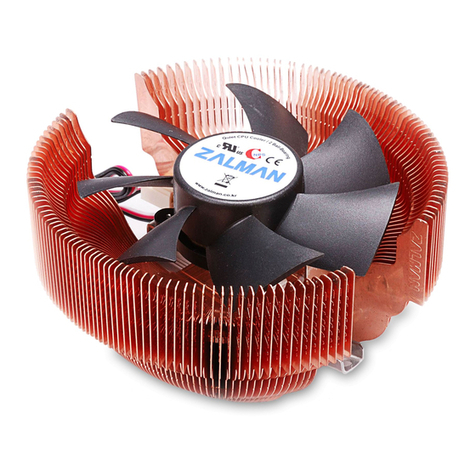
ZALMAN
ZALMAN CNPS7000C-Cu user manual
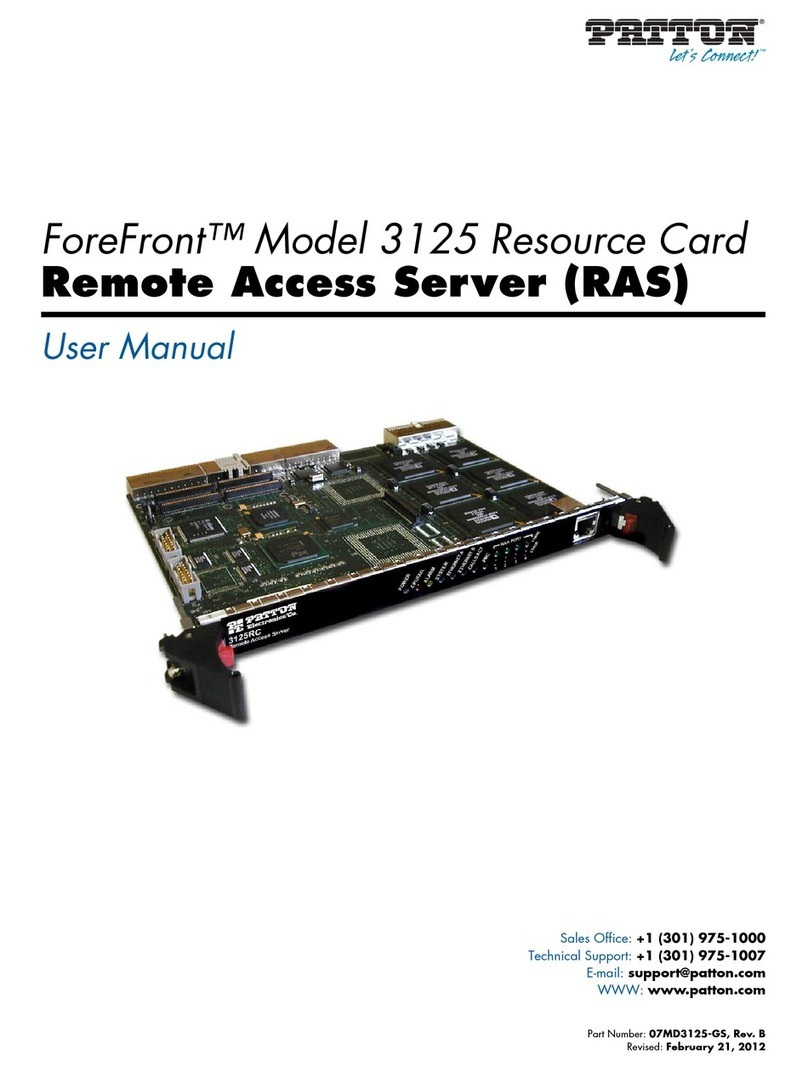
Patton
Patton ForeFront 3125 user manual
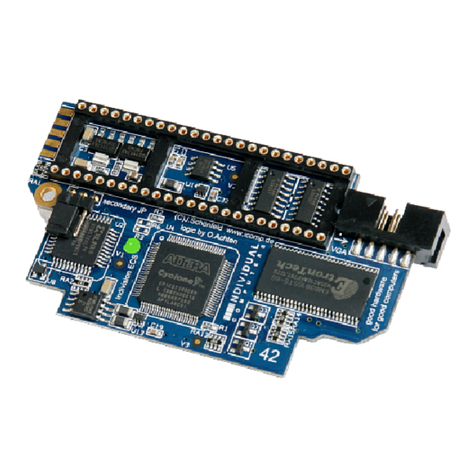
Individual Computers
Individual Computers Indivision ECS Short manual
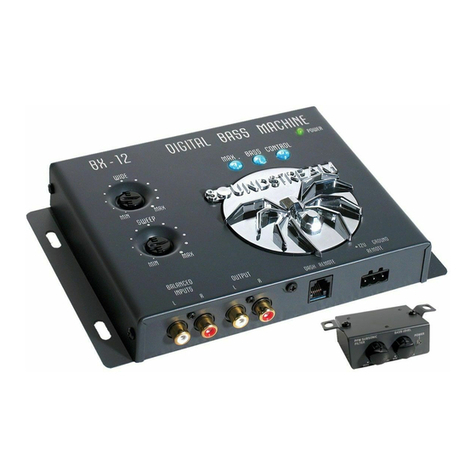
Soundstream
Soundstream BX-12 Owner's manual and installation guide
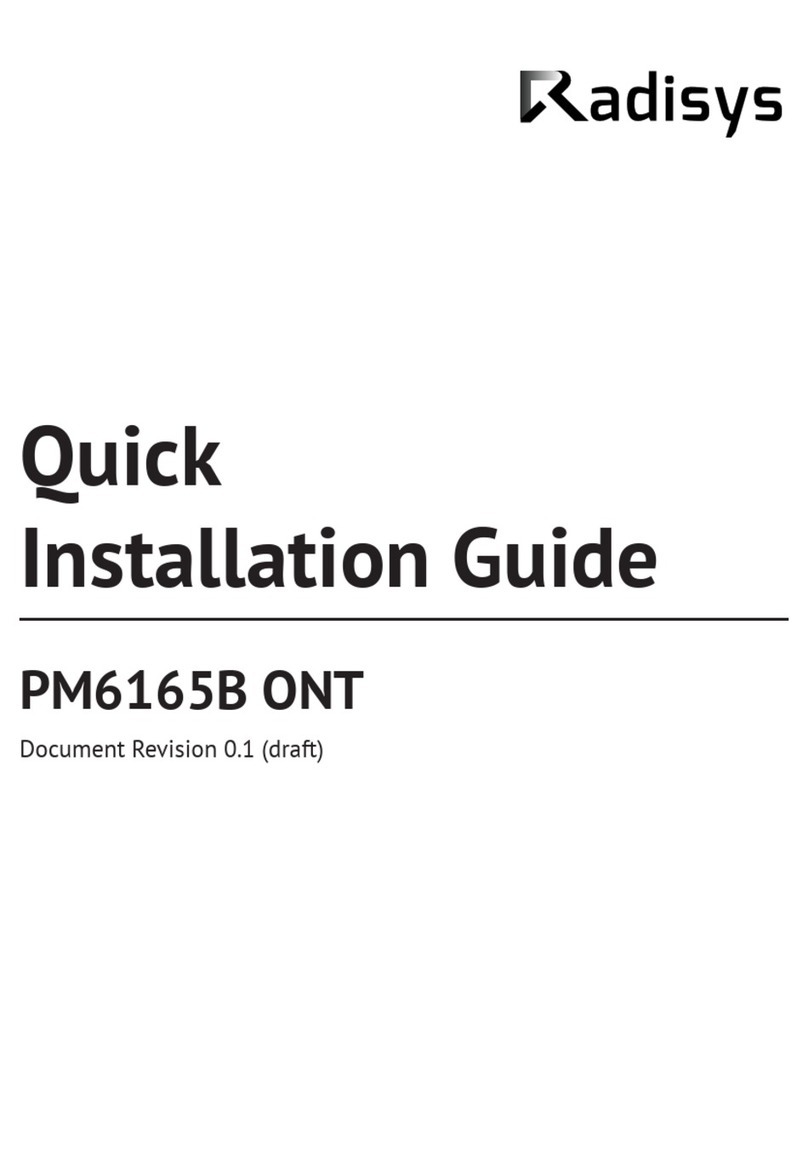
RadiSys
RadiSys PM6165B ONT Quick installation guide
